Hurrah! I finally got the scanner working properly again and Elsie’s just found the 1929 Singer Illustrated Price List after I put it back in the wrong place in The Sewing Room, so here we go with a look at some of it. By the way, when Singer said “List Price” they meant the total price when bought on “Singer Easy Terms”, and “Net Cash Price” is what it cost when paying with folding money.
That’s the later and final version of the 1900 Drawing Room Cabinet (the one that Elsie got for her birthday which I posted a snap of the other week). We’ve also just got one of these from 1920, but more of that anon. All we need now is some artistic furniture for it to harmonise with.
Just to give you some idea of how expensive these things were in 1929, if we take for example the 66K in a 5-drawer priced at £18/10/0 on HP or £14/16/0 for cash and base the calculation on average earnings, according to measuringworth.com the equivalent cost today is £3530 on HP and £2820 for cash! In other words, something like twice the cost of a really good bicycle, which actually sounds about right to us.
While we’re on the subject of cabinet tables, here’s a snap of Elsie’s 7-drawer, which currently lives in a corner of the front room with her 1940 201K in it. I’m not sure what the original machine was, on account of the lady who sold us the treadle base had sold the head for a fiver to “a woman who advertised a couple of years back wanting old sewing machines to go in shop window displays”. A pox on All Saints!
In case you’re wondering, the wire that’s plugged into that socket goes to a Singerlight which you can’t see on the back of the machine, that recess is exactly 48 inches wide, and yes the belt is a bit loud but that’s ‘cos it’s a brand new one I put on last week. It’ll soon quieten down.
That’s the 1929 incarnation of the Victorian treadle machine i.e. the coffin-top one. Until we acquired this price list, I always thought that when they introduced the fold-down treadle machines they discontinued the “put the lid on it” ones, but obviously not. OK, it was a cheaper alternative to a 3-drawer cabinet table, but surely it must have seemed a bit old-fashioned?
Love the way you could get a free home trial or rent one by the week, but most of all I just love that footstool carefully placed to show off the lid …
Ahah! So if you’ve got an electric portable, you put the lid on a pouffé! Either that or it’s a couple of spare wheelbarrow tyres. Whatever, note that these are electrics with knee-lever control (as opposed to foot pedal).
I don’t know if these tables were popular at the time, but I do know that you don’t see many of them nowadays.
This is a new one on me, and I wonder why there’s no model number? Anyhow, as I understand it, you drop your portable electric still in its base into a big recess on the top of the table, and presumably the knee-lever attaches via a hole in the front of the table. Seems a bit pointless to me, because surely the only advantage over just plonking your portable on the kitchen table is that the bed of the machine is now flush with the table top? And against that you’ve got a table which can’t be used for anything else because when you’re not using the machine, you put the lid over it.
It seems a poor thing compared to that cabinet table which used to be available with the recess into which you dropped your hand-crank portable (still in its base) to turn it into a treadle machine. And if you’re wondering how on earth that worked, the answer is that at the time, some of the portable bases had two big holes in them under the handwheel, with a slot between. Drop your machine into the cabinet table, run a treadle belt down through one hole, round the treadle wheel, back up through the other hole and over the pulley, trim and join belt in the usual way and flick the “finger” of the hand crank out from between the handwheel spokes. Bingo – your hand crank portable is now a treadle machine. (And having faffed with the belt like that to get it in place and the right length , it’s all set up so you don’t need to repeat the performance.)
To revert to hand-crank portable, you just slip the belt off treadle wheel then lift it clear of handwheel. Lift the machine out of the recess, the belt slips through the slot between the two holes, and off you go, pausing only to grab the lid from off that matching footstool, When it’s treadle time again, you just reverse the process.
Anyhow, that’s the main part of the 1929 price list, and I’ll do the 1940’s one before much longer, courtesy of Colette …



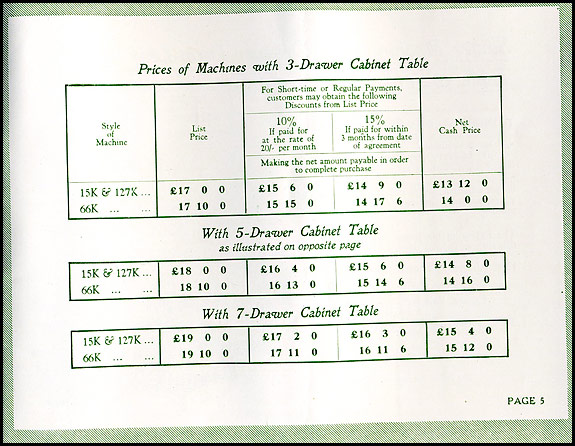


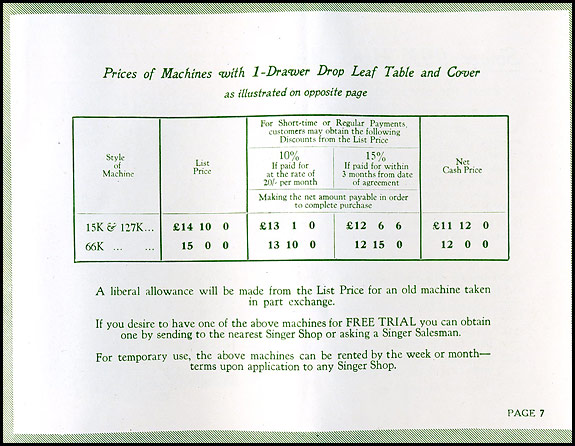
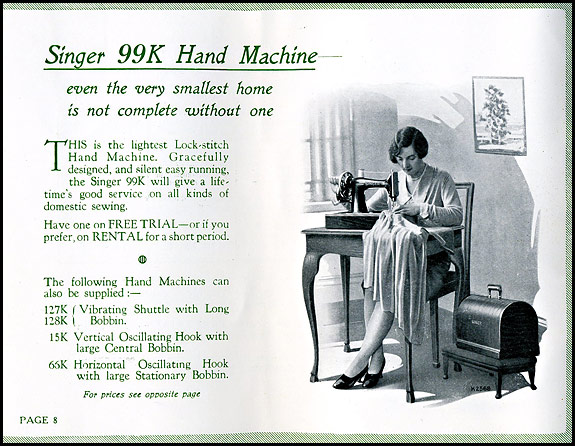

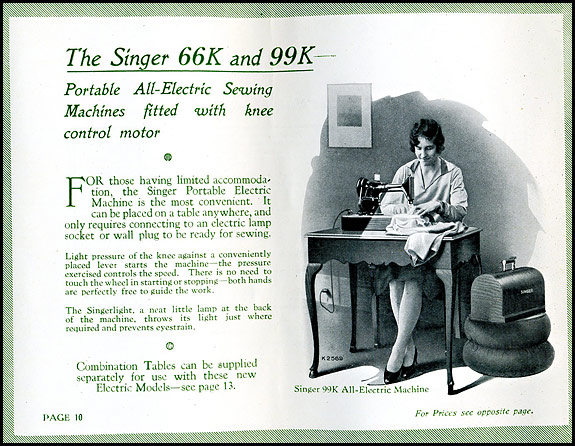
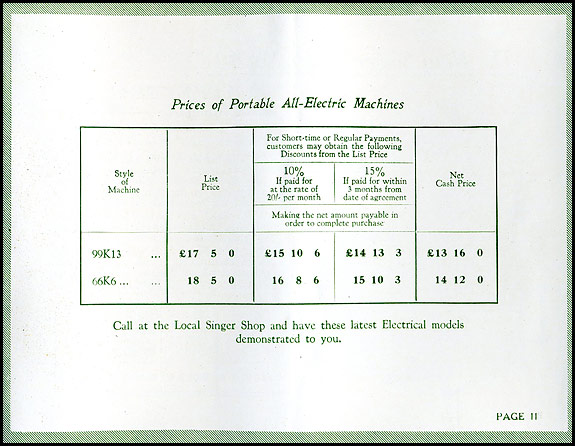
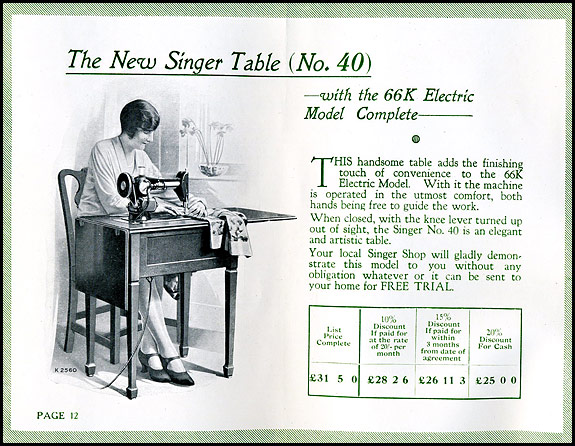

What a shame! I guess I should just focus on figuring out how to clean her up and get her in use and keep my eye on Ebay UK. Thanks for your helpful blog!
I know they existed because there was one on Ebay UK last year but I have yet to see one in the real world!
I have just bought a 128K hand crank which has that slot in the base for dropping it into a treadle table. Have you ever come across the tables that can accommodate these machines? I can’t find any information anywhere, and though I suspected that’s what the slot might be for, only got confirmation of that from this post. 🙂